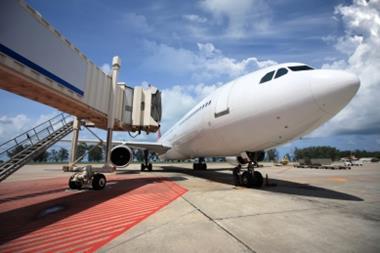In its landmark 20th year the Willis Towers Watson Networks leadership team spoke to Insurance Times about how the network is changing to remain relevant to broker members and their needs
Since Willis Towers Watson (WTW) sold its last commercial broker three years ago, the global broking firm’s only route into the UK SME sector has been through its network.
The change in strategy thrust a whole new significance on the network. As it now enters its landmark 20th year, the leadership team told Insurance Times the network is as vital to the global firm as it has ever been.

“When we first started, the network was just about markets and technology and that was it,” Sara Fardon, managing director of WTW Networks, said.
“Today we’ve built a big proposition to treat network members as business owners, as well as thinking about them as insurance brokers.”
Fardon says the evolution of the network is ongoing, and reaffirms that the US-based owners are committed to the network and strengthening the offering for members.
Digital
And to continue meeting members’ needs in the next five years, she says embracing digital change is important. “We see ourselves as the digital network going forward,” says Fardon. “When we’ve analysed what we’ve done in the last five years, a lot of it has been digital by design.”
The network has its own CRM system for brokers, a content library for digital campaigns and an app for guiding customers through the claims process.
Tom Gill, IT director for WTW Networks, says with member bosses varying in age profile some are more engaged with digital offerings than others. But the network is focussed on getting all brokers familiar with digital change.
”One of the things we did was look at typical customer journey from the broker finding the customer and then looking at solution, placement and ongoing service – what digital options were we providing here,” Gill said. “And now in the area of helping our brokers to find clients, we have a number of digital assets.”
Unlike other networks, WTW is also more open to tech-savvy start-up members joining the network. Although Fardon says a good clear business plan is essential, the network has welcomed several start-ups, benefitting the whole group with their digital expertise.
“We are evolving to set up for the next generation of brokers,” she adds.
Evolution
As well as digital services, the network has not stood still in enhancing its offering, launching seven new products to help brokers in 2018.
It now offers recommended solutions to brokers in a number of business classes and runs initiatives on wording and pricing practices in several major markets.
These new products helped organic growth between network members and its panel insurers rise by 7% last year.
This, says Fardon, is when the network is thinking about members as brokers.
From the member’s mouth

Woodward Markwell was one of the founding members of Willis Towers Watson Networks 20 years ago. The Ipswich-based broker was coming to the end of its contract in 2017 with the opportunity to leave and join a different network. But instead it signed up for another 10 years. Director David McGowen says it is the peer-to-peer support which is the most valuable aspect to being part of WTW Networks:
“We can go to a Spring Assembly or a forum or a live event and just talk candidly to the other brokers. You can’t do that in a competitive market, but you can in the network. A lot of us have been in the network for a very long time, so we have some very good relationships and we can talk about the things that are causing us a lot of issues. WTW has picked out specific types of brokers that are professional, with good standing and good community spirit, and a lot of those brokers are still there. That’s not luck that we’ve still got that, and I believe WTW still do pick out only those brokers that would fit the network. That generates trust. Many times I have put a question to the network and the answers I’ve been given have had a strong bearing on the action we’ve taken.”
Succession
But she believes it is the network’s consideration of members as whole businesses which distinguishes it from other rival networks. In particular she highlights work around member retention.
During a period when consolidation is rife and members of all networks are frequently being tapped to sell into larger private equity-backed brokers, WTW Networks retained 100% of members.
Additionally, it added six new brokers to the network in 2018, and in 2019 has already added two new members. Current GWP for all its 80-100 members is estimated at around £500m.
Having exited the SME commercial market, WTW will not buy up members looking to sell, but it will facilitate M&A between members.
John Read, the network’s regional managing director, said he works closely with insurers to find ways to keep members in the network because there is a “common interest”.
This includes help with funding internal M&A to ensure members do not have to sell to buyers outside of the network – there was £50m worth of M&A within the network last year, enabling it to retain every member.
“We’ve got succession issues as every network has”, said Read. “But we’re finding solutions to that which will keep members in the network.
“A lot of our members would like to ideally sell within the network because they know it’s the same culture.
“They like to think they have a legacy and staff there to look after. They don’t just want to sell to the highest bidder, they want to sell into a culture where they’re comfortable.”
Leverage
But the whole network team agree that the biggest pull for brokers is the advantage that comes with being backed by WTW.
Jonathon de Mendonca, market making and development manager, says the network is in a “relatively unique position to be able to take advantage of the WTW leverage and group buying power”.
He says it allows regional network members to get the equivalent access to a product as that of a half a billion-pound broker.
He picked out employee benefits as an area where WTW has big international clients.
He said: “If you look at an area like employee benefits they’re not so easy for other networks to mirror, because they are unique to the structure that we have and because we can piggy-back off the wider group.
“In reality if you look at some of our peers, they won’t have the leverage and buying power of which we are absolutely taking advantage of for the benefit of the client.”
Competition
And while there are some other networks that can also leverage the power of a global broker, Read said it was WTW’s exit from the SME market that made it more attractive.
“The unique thing about us is we do not compete with our members,” said Read. “So we are happy to share these solutions and make them work for both parties because that’s our route to distribution.
“Others who may have the leverage will also be playing in that space, so there’s a different dynamic.”
Fardon agrees and reveals the team have introduced clients from WTW to network members when they dip below the WTW client size threshold.
“We introduced one client to a network member who was delighted because it’s an opportunity on a plate with a good level of earnings on it,” she said.
And in passing business onto members, she says the clients also remain comfortable, as they have access to the WTW intellectual property (IP).
She added: “Since we vacated that space we undoubtedly share a lot more IP and we are pushing more opportunities to members. Whether that’s prospects that come to us or clients that reduce in size and are more suited to our members, we’ll pass those leads out.”
It protects WTW from any conflicts of interest with its network members, and Fardon concludes that it means the broker can be genuine in its sentiment that it wants to help members.
“It’s a very strong message and one we keep building on all of the time,” she says. “Our job in terms of running the network is to keep a good overview of what’s going on in our company and see the trends and translate that through to network brokers in their space.”
Hosted by comedian and actor Tom Allen, 34 Gold, 23 Silver and 22 Bronze awards were handed out across an amazing 34 categories recognising brilliance and innovation right across the breadth of UK general insurance.




















































No comments yet